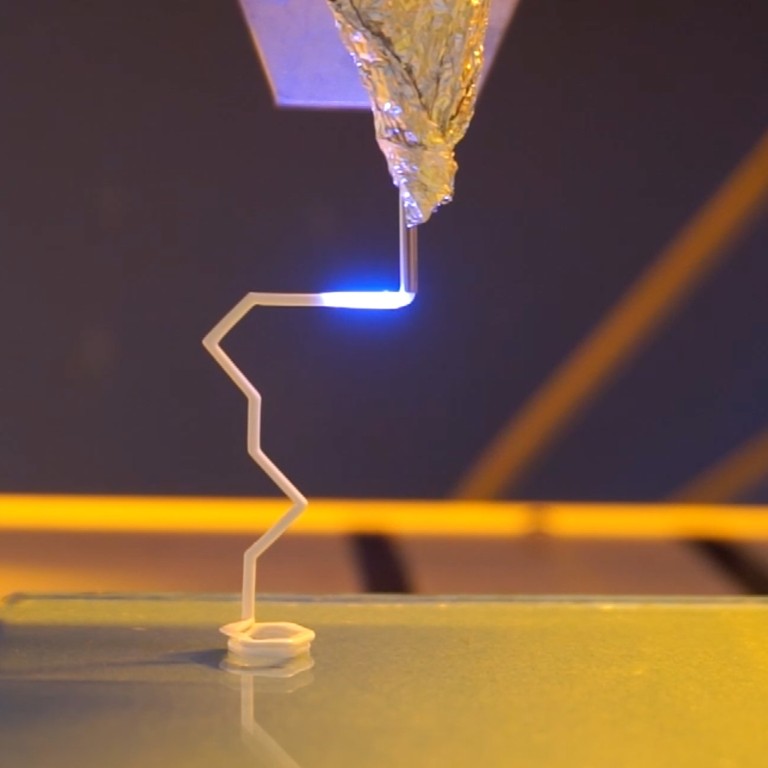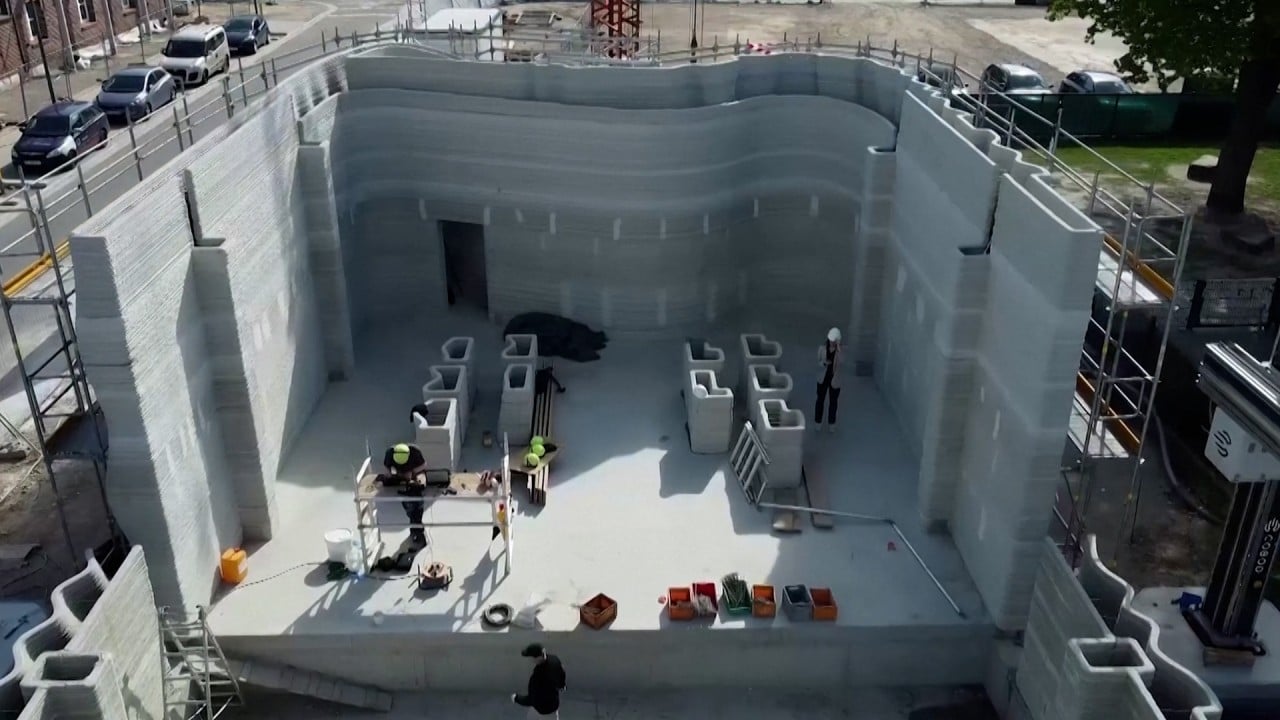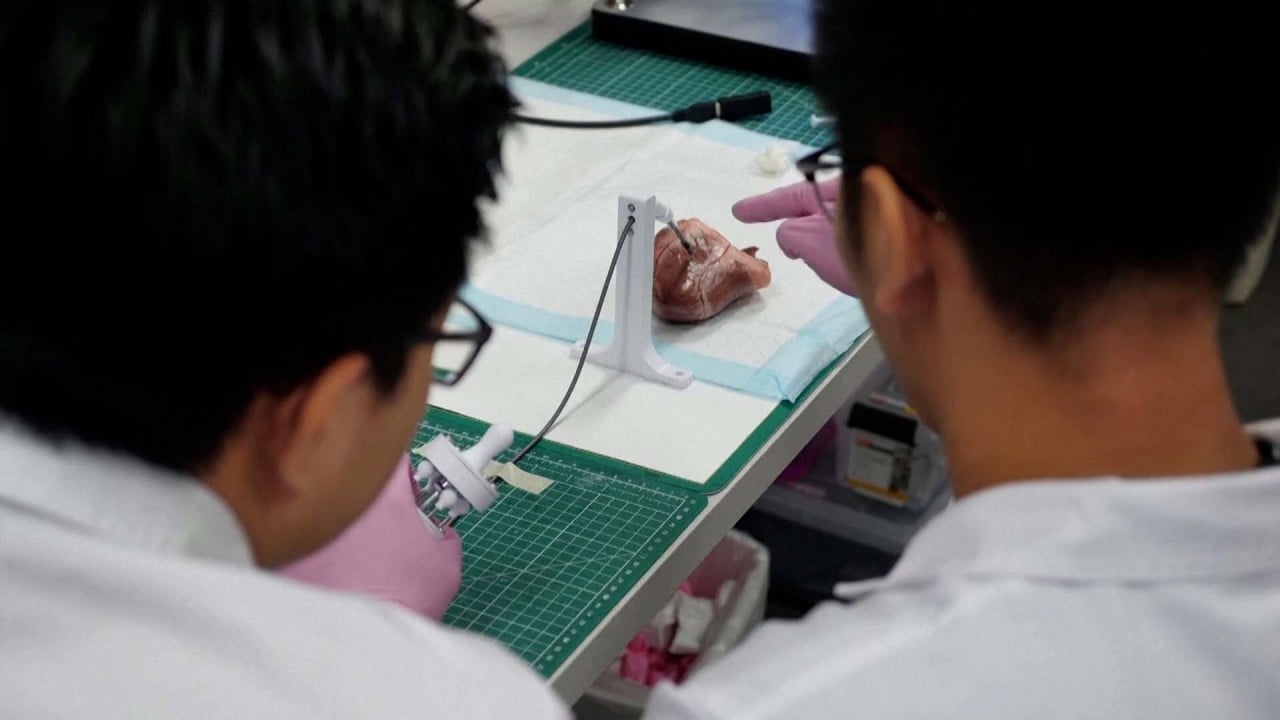
Chinese scientists develop cutting-edge tech for 3D ceramic printing in the air to create complex engineering parts
- Jiangnan University team creates new printing paste and improved curing technique to boost printing efficiency and remove need for support structures
- Ceramics are widely used in mechanical engineering, electronics and aerospace fields but their brittleness and hardness make manufacturing a challenge
This cutting-edge method can construct ceramic parts at almost any angle, enabling the creation of shapes that were previously impossible for typical 3D printing techniques.
3D printing, also called additive manufacturing (AM), has offered an efficient and convenient way to produce complex ceramics with integrated structures and functions.
In traditional 3D printing of ceramics, additional supporting structures are often needed to prevent the collapse of unsupported parts. This extra skeleton not only affects printing efficiency but also raises issues related to the removal of these supports.
Addressing these challenges, Professor Liu Ren and his team at Jiangnan University developed a new printing paste and an improved curing technique that helps the material solidify rapidly, enhancing 3D printing efficiency for ceramics and eliminating the need for support structures.
Their novel technique can instantly solidify multi-scale filaments with diameters ranging from 0.41mm (0.02 inch) to 3.5mm, successfully constructing various ceramic structures, such as torsion springs and cantilever structures.
The team’s findings were published in the peer-reviewed journal Nature Communications on April 25.
The new paste is a photosensitive ceramic slurry, which quickly solidifies and increases in strength on exposure to near-infrared (NIR) light. With certain NIR radiation intensity, the material holds its shape in mid-air immediately after being extruded from the nozzle.
“The printed curves can be freely extended in space without support. The printing process is smooth and continuous, without the need for heating or cooling,” Liu said in the paper.
Chinese team develops first ceramic material that can bend like metal
The researchers also showed that NIR light can achieve a better effect than the commonly used ultraviolet (UV) light.
Cure depth – a measure often used to characterise the penetration ability of light – of the slurry was tested under NIR light and UV light separately.
The tests showed that under UV light, the curing depth can reach 1.02mm after 130 seconds. However, under NIR light exposure for 3 seconds, the curing depth reaches 3.81mm, meaning NIR enables faster high-precision printing.
In video demonstrations, Liu and his team printed three-dimensional curved structures horizontally at a speed of 1mm per second. The resulting ceramics maintained their shape well and remained stable even during subsequent processes of sintering, or compacting and shaping under high temperatures.
The technique was also used to create structures with sharp turns, such as torsion springs, although proper nozzle selection and laser positioning were essential to prevent their collapse or obstruction.
Multi-material 3D printing is also a challenging topic in ceramic construction, with different photocuring properties of ceramic materials potentially causing warping, delamination and cracks during high-temperature sintering.
The team showed the ability to print mixed ceramics by using additives such as iron red, chromium green or yttria-stabilised zirconia, which helped them to unify the sintering temperatures of ceramics with varying properties.
“The key to this technology is not only the elimination of the support required in a typical printing process, but also brings about many other advantages, such as reduced printing time, material usage and post-processing workload,” Liu said in the paper.
To out-compete China, Biden launches 3D printing initiative
The refinement of ink components and printing parameters – such as nozzle diameter, extrusion pressure, movement speed and light intensity – could create objects with better resolution and distinctive aesthetics, the paper said.
Liu said this new technique of 3D printing had the potential to be taken further, and ceramic shapes made without support would inspire more innovation and make additive manufacturing technologies more widespread.



